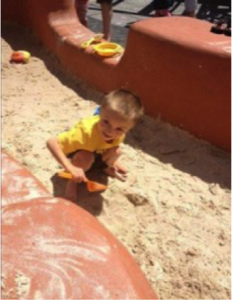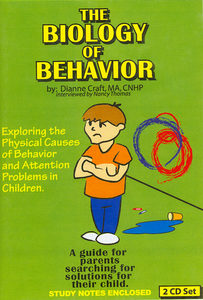Sensory Processing Dysfunction
Dr. Lendon Smith, the famous baby doctor and author of Feed Your Kids Right, calls these wonderful children who are struggling with Sensory Processing Dysfunction, “goosey, touchy kids”. I’ve often referred to these kids whose nervous system in disequilibrium as “kids uncomfortable in their own skin”. Their nervous system reacts to outside stimuli in an abnormal manner. In other words, they are very “over-reactive” to physical and emotional input. This can cause them to seem to be at odds with their environment much of theday.
Common Symptoms:
Touch sensitivity
- Clothing tags botherthem
- Socks must have soft seams (or better yet,none)
- Wears only soft, non-binding clothes…nojeans
- Resists hair being combed, washed andcut
- visits difficult (stethoscopephobia)
Auditory Sensitivity
- Sensitive to loud noises (hands over ears for vacuumcleaner)
- Dislikes being in a largegroup
- Language delayed somewhat ormuch
- Transitions are hard (have to be told of all changesbeforehand)
Taste Sensitivity
- Food textures botherhim
- Won’t eat meat…or verylittle
- Chews onclothing
- Very selective eater (usually seeks to eatcarbs)
- Foods can’t touch on plate (no casseroles forhim!)
Nobody has all of these symptoms. These kids are so distracted by their own overactive nervous system reactions to the world, that they can seem to have “ADD”.
On a lighter note, here are four ways to confirm you are a parent of a child with Sensory Issues:
- The barber tools required for your child’s haircut include sedatives and a scissor silencer.
- Seven different family meals need to be prepared for your family of
- The thought of your child’s upcoming dental visit gives you anxiety attacks that require medication and
- You also start wearing your socks and underwear inside out because it really does feel more comfortable that
Traditional treatments
There are many good traditional treatments for these children. Occupational and Physical Therapists are good sources of interventions. They will often show parents how to use a specific Brushing Technique with their child to help re-train the child’s over reactive nervous system. If a child is more “sensory seeking”, the therapists might have a child wear a specially weighted vest for a few months to re-educate the nervous system.
My favorite intervention, other than the nutritional interventions, is to use crossing the midline therapy. I use Brain Integration Therapy. I have found this to consistently be effective in helping a child significantly modulate his or her nervous system without effort. Other midline therapies are available also and are effective in improving sensorymodulation.
Alternative treatments
Sometimes surprising, easy, natural treatments work very well in reducing the symptoms that these children are suffering with. A very good example is provided at the beginning of this article. In the picture of the young boy in the sandbox at the top of the page, you will see that this mom reports that she used a substance called Mineral Rich. She calls this “Liquid Gold.” Her son had such touch sensitivity that he couldn’t bear to have the sand touch his feet. This is not an uncommon reaction from kids with SPD. His nervous system was in “red alert”, signaling that the feeling of sand was dangerous and painful. His mother found a way to settle down his nervous system by using a natural mineral supplement that has four times as much magnesium as calcium. In fact, she said that after she supplemented him with this mineral blend, he didn’t cover his ears anymore when the vacuum was on, or the doorbell rang. His “hyperacousia”(noise sensitivity) was greatlydiminished.
Why do we use the ratio of minerals contained in Mineral Rich to help children whose nervous system is over-reactive? It’s because we know that magnesium is “nature’s tranquilizer.” We also know magnesium can be a laxative (remember Milk of Magnesia?). It is very relaxing to all the muscles, even the colon. In fact, if you look up the symptoms of magnesium deficiency and sensory processing disorder, you will see a significant correlation. It is fascinating to see this close match of symptoms. It is always best to check with your physician before adding any nutritional supplement. However if you decide that you want to consider adding some supplemental magnesium, there are many types to choose from. The mom in this story, used Mineral Rich by Maximum Living which is a cherry tasting liquid that has the most helpful magnesium/calcium ratio. This is available at any health food store. If you choose to use capsules, the magnesium citrate is the form that Dr. George Juetersonke, a practicing integrative physician in Colorado Springs, recommends. The potential downside to magnesium supplementation?….too much can cause loose stools. This is easily stopped with reduction in amount. I always take any supplement I give my child, myself. Then I can more easily monitor effects. A good source of more information on the role of magnesium for the sensory issues is the book, The Miracle of Magnesiumby Dr. Carolyn Dean, M.D., N.D. You will enjoy reading about the different ways to soothe your child’s nervous system.
Izaya was an eleven year old who struggled so much with sensory issues that he cried when his mom was in the shower. She couldn’t leave the room without letting him know so he could come along. Overnight birthday parties that his peers participated in were not something he could attend. After a few months of targeted nutritional interventions, including the all-important magnesium supplement, she reported that he now stays overnight with his friends, goes to public bathrooms by himself, and in general doesn’t ‘freak out’ about everything.”
These types of parent reports aren’t unusual when parents begin using nutritional interventions to help their child’s nervous system settle down. Changes can occur quickly. Where to find some ideas for your child? You can visit an Integrative/Functional Physician, or a Certified Nutritionist for ideas. For some basic, effective nutritional ideas, put “Sensory Processing Protocol” in the Subject Line and email me at child.diagnosticsCS@gmail.com.

A Facebook post of a young boy struggling with Sensory Processing Disorder (SPD).
This 4 year old boy wouldn’t have his feet touch sand EVER!
Mom calls Mineral Rich “liquid gold”. Says how much they can get done in a day depends on the intake of these vital minerals.

To learn more about our 3-month targeted nutritional program that many families use to help with sensory integration problems, visit our website store and get your copy of the Biology of Behavior CD set and Nutritional Study Guide!
Dianne Craft is a Certified Natural Health Professional and has a Master’s Degree in Elementary and Special Education. She has 25 years’ experience teaching bright, hardworking children and teens who have to work too hard to learn. Using her unique “Three Pronged Approach” to eliminating learning blocks, she and her team provide Personal Internet/Phone/Skype consultations for families across the country. For those interested in learning new strategies to get kids “unstuck”, Dianne is happy to announce the release of her new 9 workshop Teacher Training video series, “The Struggling learner Seminar.”
